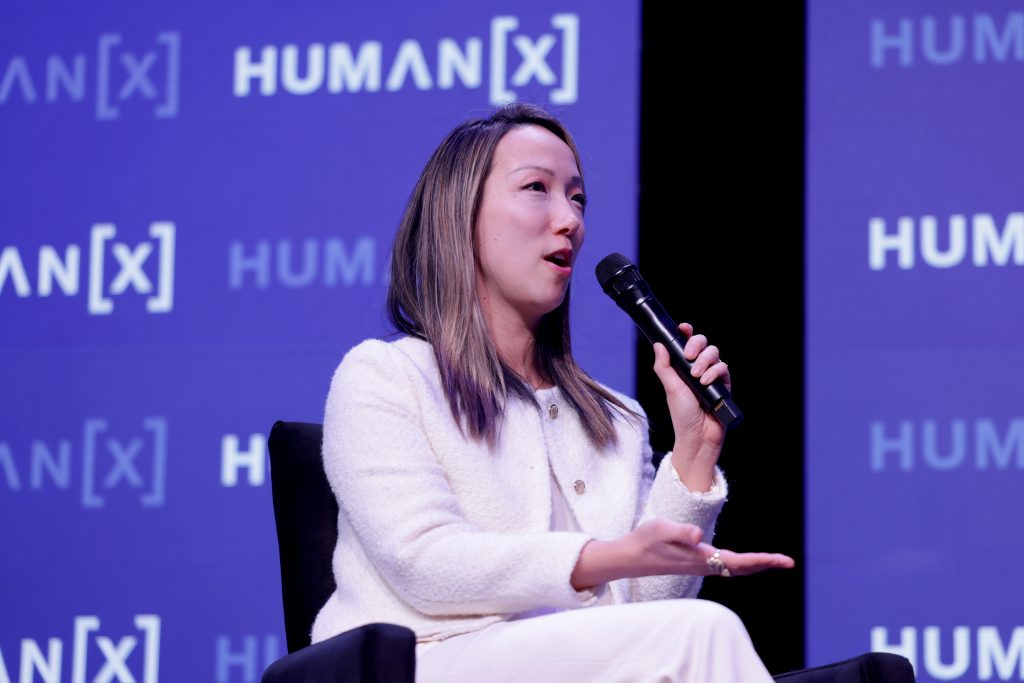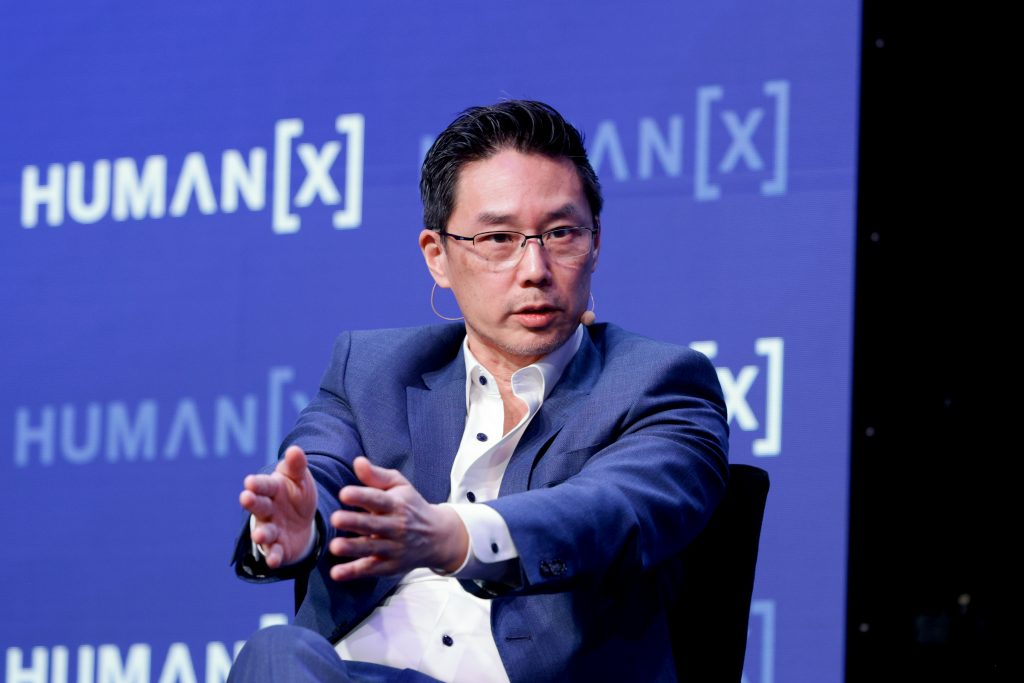The HumanX conference continued in Las Vegas today, with the complexities of balancing AI innovation with security and trust taking centre stage.
Industry leaders from across the tech world shared their insights on the need for ethical AI deployment, robust governance, and infrastructure designed for the AI age.
Here are 12 of key takeaways that you shouldn’t miss:
🪫Cybersecurity Challenges & AI

- Timothy Galluzi, CIO at State of Nevada: “The things that keep me up at night—obviously it’s the cybersecurity components of it. It’s the fact that as generative AI advances, those that want to do us harm have access to this technology in magnitudes much greater than what we have access to. And they’re going to use these tools against us. Being able to defend against these things means I need to also have access to those tools. But then also, being able to leverage those tools in a safe way. Having agents able to produce an output that is verifiable, that is accurate.”
- Clara Shih, Head of Business AI, Meta: “This [AI] is a big disruption, and it’s moving really fast. There are risks that we have to mitigate. There’s a lot of work that has been done and still more work that needs to be done in the industry, and Meta has been leading efforts around safety, trust, and security. For example, the Llama team has put out several open tools—Llama Guard, Prompt Guard—and is making these available to every developer so that we can all develop AI more safely.”
🔍 Building Trust in AI

- Rodrigo Liang, Co-founder & CEO, SambaNova Systems: “Trustworthy AI is going to be the new competitive edge. We’ve got to the point where you’ve got a lot of people providing services, but can you provide something that people can trust, people can believe? At SambaNova, we’re very focused on making sure that transparency is at the key of that. And we went 100% open source because it allows you a level of transparency on how [models] were trained, what model was used, what you are doing to actually deliver those services so that your users can then trust the outcome of it. I think over the coming year, you’re going to see more and more interest in making sure that the services we provide are explainable, are transparent, so that you can build that level of trust with the consumers that are using your services.”
- Navrina Singh, Founder & CEO, Credo AI Connect: “A lot of the enterprises we work with are embedding a lot of AI in their customer-facing applications. And if these are not risk managed, then these AI applications become just a liability for the business, exposing them to everything from regulatory risk to reputational damage etc. So what they are trying to also do is make sure, if you can quantify […] you were able to reduce the risk, […] as a result, of which you are building more customer trust. And the upside of that is you’re selling more AI faster to customers and thus adding to your top line.”
🌐 The State Of Global AI Regulation
- Karen Silverman, Founder & CEO at The Cantellus Group: “I would like to see as much innovation in the thinking around regulation and governance as we see on the technology side. And we’re not there yet. We’re still trying to use all the old regulatory schemes to kind of mash up against these new problems. And they don’t fit, they don’t work, and we act surprised each time. What we really need to do is go back to the drawing board and figure out what we’re trying to do.
- David Danks, Professor of Data Science, Philosophy, & Policy at the University of California, San Diego: “In China, you have some of the strongest consumer privacy protections in the world, but they’re against other companies. They’re not against the government. So it’s a very asymmetric approach. Where are we now in the US? I think honestly, we don’t know. There’s been a tremendous pullback; there’s been a declaration that regulation is opposed to innovation, which is, of course, wrong. There’s decades of research showing that smart governance increases innovation. But now we’re at a sort of very uncertain time for the US government.”
- Lexi Reese, Co-founder & CEO of Lanai Connect: “The EU is all about, ‘Is it safe for our citizens and privacy rights?’ China is about accelerating state control. And the US […] is all about what creates market and market dominance. You’re certainly not going to see more federal regulation; we will only see more state-based regulation. And that’s just confusing. Those are contradictory. But I do think this helps as a mental model of those things. Is it safe, Europe? Can the state access, China? And is it good for markets, the US? That’s a great summary.”
- Didem Un Ates, Chief Executive, LotusAI Connect, on the future of AI governance: “It could be very well that in the long term, I don’t know if it’s 10 years or 7 years or whatever, but truly getting help from AI to govern. Because when we say AI governance, if it’s done well, we also need to govern humans. Because […] we are very vulnerable animals. So, I think it would be a harmonious human-machine collaboration governing the whole output, or the end-to-end process. That’s what I’m seeing, but who knows!”
🔧 Ethical AI Infrastructure & Deployment
- Nick Pickles, Chief Policy Officer at Tools for Humanity: “We think verifying humanness adds a layer of consumer experience that adds value to the underlying [AI] service. But I think that’s where actually it’s less about what are the new services and more about what’s the infrastructure that you need in an AI age to build great things. And that’s probably going to look quite different from the infrastructure we’ve had in the past evolution of the web, which was very mobile-centric.”
- Ethan Goodhart, Founder of EthicsGPT.AI, on recommendations for safeguarding AI governance: “I think the red teaming of whatever AI system you’re trying to deploy and thinking about the data and the input that is going to be going into the system, whether it’s a model or whether it’s an agent. Thinking about the data that’s going to be coming from your users into the agent, both white-hat use cases and also maybe black-hat use cases. Designing your framework of how you approach safety around that and around the inputs and outputs of your model, I think, is a good way to think about it.”
- Raj Bharat Patel, AI Transformation Lead at Holistic AI: “Having robust testing, having good visibility, and having a good risk appetite structure that you can effectively deploy to your organization is key, and the only way that you can really deploy at scale.”
💡 A brighter note…

Thomas Wolf is Co-founder & Chief Science Officer at HuggingFace, a platform for building and using machine learning platforms, with over 1 million models. I asked him if there had been any increase in malicious or cybercriminal activity in their community:
“Surprisingly, we have very few problems like that. We have a lot of procedures and things place You can flag models. You can flag data sets and apps if you think they are not legal. We favour open discussion on these issues. So usually you flag it, and then you can discuss it, and the author can maybe defend their case, and then we take a decision.”
“We have a pretty open threshold, I would say, in the end, we want the platform to stay as open as it can. But we have very surprisingly limited number of issues with apps. I guess the community is pretty positive. A lot of people just want to build nice thing with AI. They don’t want to build bad things. So that’s pretty cool.”
For more coverage from HumanX 2025, follow Expert Insights on Linkedin.
About Expert Insights
Expert Insights saves you time and hassle by rigorously analyzing cybersecurity solutions and cutting through the hype to deliver clear, actionable shortlists.
We specialize in cybersecurity. So, our focus is sharper, our knowledge is deeper and our insights are better. What’s more, our advice is completely impartial.
In a world saturated with information, we exist to arm experts with the insights they need to protect their organization.
That’s why over 1 million businesses have used us to inform their cybersecurity research.
Expert Insights’ Cybersecurity Resources
- The Top RMM Solutions For MSPs
- The Top Mobile Device Management (MDM) Solutions
- The Top Email Security Solutions For Office 365
- The Top Email Security Gateways
- The Top Multi-Factor Authentication (MFA) Solutions For Business
- The Top Phishing Protection Solutions
- The Top Cyber Threat Intelligence Solutions

